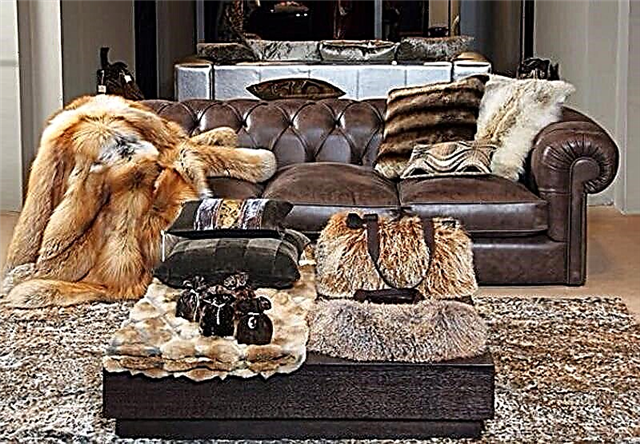Warm, solid and durable drape - what it happens, how to care for it and what is sewn from it.

What is a drape?
Drape is a dense, usually heavy, woolen or woolen weave fabric. Outerwear, primarily a coat, is usually sewn from a drape.
Drap appeared in France at the end of the 18th century along with the invention of weaving equipment, on which it became possible to produce material from two layers of fibers. Initially, drapes were made only of wool. Modern drapes may include synthetic additives and are not necessarily two-layer.
What fabric matting?
What is drape?

Today, drape is not necessarily the very dense, heavy, two-layer, and pure-wool material that it was once invented.
Modern drape can be single-layer (made from two systems of threads, average density 400-550 g / m2), one and a half-layer (from three systems of threads, average density 500-600 g / m2), two-layer (from 4-5 systems of threads, the most dense and heavy, up to 700 g / m2).

In terms of composition, the drapes can be pure-wool or with a predominant content of wool (at least 85% of the wool in the composition), half-woolen (up to 70% of the wool in the composition), and in general almost completely consist of non-wool fibers (viscose, polyester, etc.).
The wool used to make the drape can also be different. For example, high-quality and expensive, rough or semi-rough, or mixed.In particular, the outer surface of the drape can be made of better quality wool, and the inner surface can be made of worse wool, from wool with additives or not from wool, but from other materials. The best and most expensive drap, respectively, will be made of the highest quality material.

As a rule, draped fabrics have a pile, and the materials can vary in length, density, texture of this pile. For example, a pile may be present on two sides or only on one side, be shorter or longer, fluffy or pressed, teased, form patterns, and so on.
According to the colors, the drape can be single-color, melange or multi-color, when the threads of different colors form a pattern.
How to decorate cashmere coat
The main properties of the drape

Of course, the properties of different drape fabrics will vary depending on their composition and other features that we talked about above. But these materials have common qualities:
* Good thermal insulation
Drap, especially with a good percentage of wool and dense, retains heat very well.
* Windproof
Due to its density, the drapes are not blown by the wind. This makes it suitable for sewing outerwear.
* Ability to maintain optimal body temperature
Another quality important for the material for a good outerwear. Drap, especially from natural fibers, “breathes”, due to which it is difficult to overheat in the drapery thing.
* Strength and durability
As a particularly dense weave fabric, the drape is strong, durable and wear-resistant.
* Low creasing and crumbling edges
Drape, especially dense, almost does not wrinkle and drapes little, but of the lighter varieties, beautiful folds can be laid. Raw edges show off a little.

Coat haute couture fall-winter'19−20: 56 examples from the catwalk
What is sewn from drap?

First of all, outer clothing is sewn from drapes - coats and so on, plus suits, jackets, skirts and trousers. Also - hats and other accessories, including shoes. Blended cloths go to windproof equipment and uniforms.

Draped fabrics are also in demand in furniture production: they fit upholstered furniture, sew poufs out of it, and use it for other home textiles. They also make toys out of drapes.

Pattern of the month: a cozy woolen coat with a belt (and its competitors!)
How to care for a drape?

Drape care will also largely depend on its type and composition.
* Most types of drap can not be washed - with significant impurities it is better to use dry cleaning.
* Regularly wrap the drape items with a dry brush.
* Some types of drap, mainly lightweight or not pure wool, can be washed delicately or manually at a low temperature (30 degrees), it is better to use special detergents for washing wool. But not every drape will take the wash: it is better to check the label on purchased items, and when buying fabric in a store, clarify this point, or first wash a shred on the sample. When washing, do not rub and twist the drapery things. After washing, rinse well, do not wring out, allow water to drain and dry on a horizontal surface where there is no direct sunlight.Drain on a hanger, straighten.
* If the coat, hat or other thing from the drap is wet in the rain or snow, it is better to straighten them and dry them so that the folds do not lock in (otherwise it will be difficult to get rid of them).
* Drap is best ironed at low temperature, from the inside, using steam, without strong pressure. You can use a steamer.
Photo: wooltrade. cz, blog.fabricuk.com, fabric.com, Joli Closet, noahny.com, AliExpress.com
What kind of fabric is canvas?
What kind of fabric is percale?
Cupro - "copper" fabric for beautiful products
Romantic staple: fabric with a Soviet past



